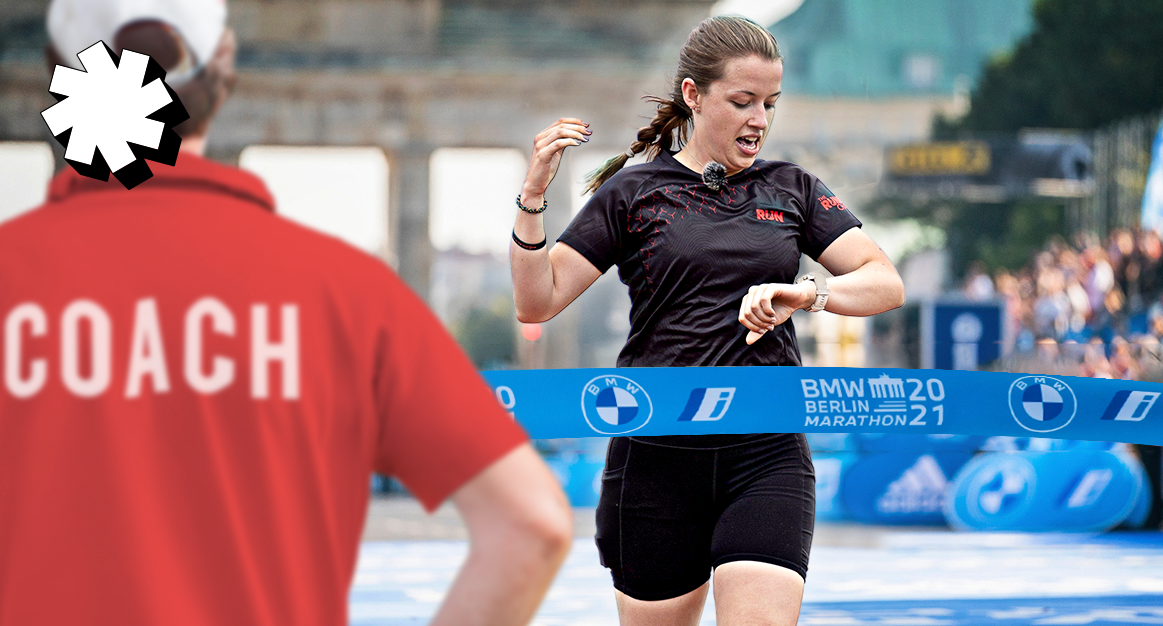How Far Do Footballers Run In a Game?

They look like they’re walking, running and sprinting for a full 90 minutes, but how far do footballers actually run in a game? Which footballers run the most? Who is the fastest? What’s the record for the furthest distance run by a footballers in a game? Read on to find out!
HOW FAR DO FOOTBALLERS RUN?
Extensive research by the CIES Football Observatory looked at the average total distance that all the outfield players ran on a team, comparing data from professional leagues all around the world during the 2020-2021 season. They found that teams in Spain’s La Liga ran the most on average, with their 10 men together covering 103.7km (64.4 miles), with Premier League players running 100.8km (62.6 miles). Brazil’s Serie A players ran the least at 95.8km (59.5 miles). Other data shows instances when teams have cumulatively run 120km (74.5 miles).
From that data, we can work out that the average footballer runs 10,000m (10km or 6.2 miles) per game. Of that, on average centre backs ran the least (9,200m), and midfielders ran the most (10,600m). Goalkeepers cover around 5,000m (3 miles) in a game. Players tend to run slightly more in the first half compared to the second half.
Other research has given a similar distance, with 9,000m-11,000m (5.6-6.8 miles) a general range for outfield professional players, which is similar for men and women.
WALK, JOG, RUN & SPRINT
The distance that a player covers includes all their movement on the pitch, whether that’s walking, jogging, running or sprinting.
Most players walk, jog or run 70-80% of the distance they cover in a game, 10-20% is at a moderate to fast pace, and less than 10% is very fast. Most players run very fast or sprint 700m-900m.
The number of sprints a footballer makes in a game is 10-25, and they typically all-out sprint for 100m-200m in total during a game.
WHAT’S THE FURTHEST DISTANCE RUN IN A PROFESSIONAL FOOTBALL MATCH?
There are several recorded instances of players running more than 15km (9.3 miles) in a game, and the record for the furthest known distance covered during a World Cup game is Croatia’s Marcelo Brozovic, who ran an epic 16.7km (10.4 miles) against Japan in 2022.
Stats from the 2023-2024 Premier League season showed that Tottenham’s Dejan Kulusevski ran the most out of any player in one game, covering 13.36km (8.3 miles) against Everton. At least 10 players ran 13km (8.1 miles) in a game during the season.
Newcastle’s Bruno Guimaraes ran the furthest overall out of anyone in the Premier League in 2023-2024, covering a total of 423.09km (262.9 miles) during the season (he played in 37 matches, so averaged 11.4km/7.4 miles per game).
The fastest player recorded in the 2023-2024 Premier League season was Tottenham’s Micky van de Ven, who was recorded running 37.38 km/h (23.23 mph) in a game against Brentford.
How does that compare to the great Usain Bolt? Well, in his 100m world record run in 2009, Usain hit a top speed of 44.72 kmh (27.78 mph) and his average speed over the full 100m was 37.58 kmh (23.35 mph).
WHAT ABOUT THE REF?
Unlike the players who tend to work in a specific zone of the pitch, the referee chases the action up and down, staying close to the ball at all times.
On average they run between six and eight miles, and one large study of 328 games recorded a mean of 11.6km (7.2 miles). Of that distance, the refs on average walked around 3,450m, jogged 4,840m, ran 2,400m, and ran fast or sprinted 850m – a similar split to the players.
DO PROFESSIONAL FOOTBALLERS RUN MORE THAN PROFESSIONAL RUNNERS?
No, probably not. Many elite runners, especially those running middle-distance events and upwards, will run a minimum of 100km per week (62.2 miles), and often up to 200km (124.4 miles).
If a footballer plays two games a week and trains on three or four days, and if we estimate 15-20km per day (including warm-ups and the games or training), then that’s 75-120km a week (46-75 miles).
The training will also be different. Runners will spend most of their time on easy miles and building their overall volume, with two or three faster intervals a week. These intervals will rarely be shorter than 100m (the length of a football pitch), and will often be several miles long. Footballers will do a lot of easy jogging and running, but more of their training will be shorter and more intense sprints, recovering quickly to then do it again, while also working on their agility and movement on and off the ball.
HOW IS THIS ALL MEASURED?
You don’t see footballers wearing their Garmin watch on the field, and most professional players wear a GPS vest. These allow coaching staff to track and analyse distance run and speed, to try and ensure a player’s workload and performance are always optimal to minimise injury risk. Players wear these during training and matches. Some teams use cameras to record this data during games.
HOW FAR DO PLAYERS OF OTHER SPORTS RUN?
Rugby players cover an average of 7km per game. American football varies greatly by position, but the receivers and cornerbacks run around 2km in a game. Basketball is around 4km a game. Tennis players cover 2km-5km, with those playing out five-set matches possibly running further. Some cricketers could run 15km-20km in a game, depending on their position – a fast bowler with a long run-up, or a batsman who scores a lot of runs, will run more than others. Aussie Rules players perhaps cover the most on average, running more than 13km per 80-minute game.
Do you find it surprising that footballers cover only around 10,000m during a 90 minute match?




























Running News
Could Shanghai Marathon Become A World Marathon Major?
Mengesha and Ketema Win The 2024 Berlin Marathon
ATHLOS 2024: An Incredible Night Of Women’s Track Racing in NYC